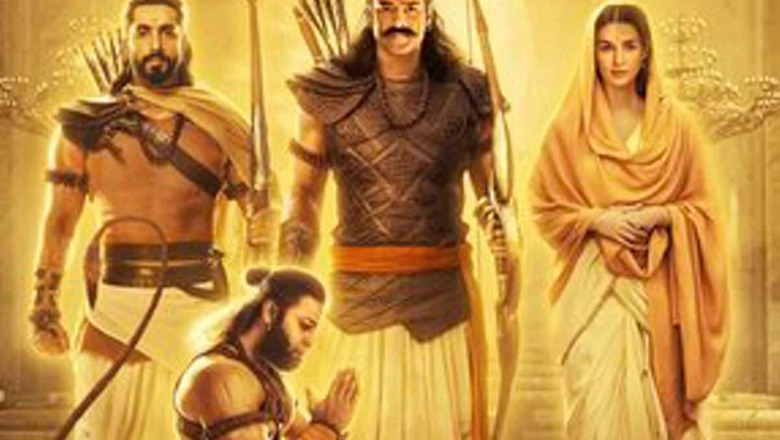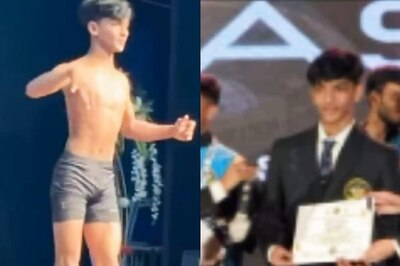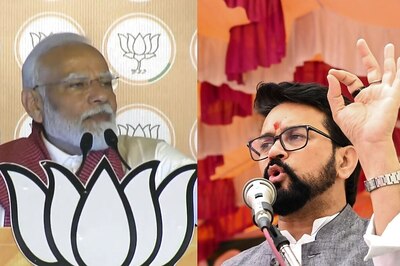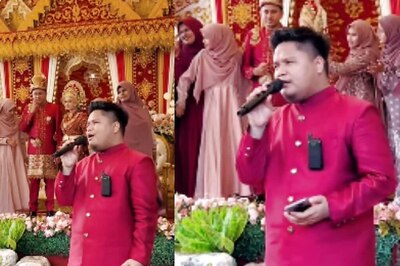
views
Those opposed to anything Hindu or Sanatana dharma must be celebrating the film Adipurush and its story writer Manoj Muntashir being vilified. The proponents of Sanatana dharma have charged that the writer has taken liberty with certain events of the legendary Valmiki Ramayana. But the subtle message of the film is being missed which is to depict Lord Rama as all-powerful and muscular and bring the story of Rama and Ravana directly before the younger generation.
The younger generation, bowled over by the pizza culture, has no time to stop and look back and watch the 78-episode Ramayana produced by Ramanand Sagar for DD channel in 1987. This movie of 119 minutes has helped bring the Ramayana story directly to them using cartoons, real-life characters and VFX technology. They liked the movie Bahubali and they would like Adipurush too.
Every generation must watch the story of Ramayana in its own context. Ramanand Sagar’s Ramayana was to showcase the brilliance of India’s cultural ethos. The Puritan values were supposed to purge the nation of its sin and also Rajiv Gandhi who had turned the Constitution upside down by reversing the Supreme Court decision on the Shah Bano case in 1986.
The India of the 21st century needs a different Ramayana that must address the issues facing the country. Religion must give solutions to stay relevant. Bhagavad Gita has withstood its philosophy of life and would remain immortal. The present generation may not find traction with Mahabharata but it would also resonate with the philosophy of Bhagavad Gita. No wonder it is being taught in management institutes.
When it comes to Ramayana, the younger generation may not know much about the characters and what they represent. The majestic Ram temple in Ayodhya is going to be a symbol of humanity. But is the younger generation linked to the cultural ethos that Ramayana presented? The movie would certainly create interest and strengthen the core value of Sanatana dharma, which is to run society on the basis of dharma.
Adipurush tries to contextualise Rama and Ravana and present them as two iconic characters representing good and evil. While Rama is shown as muscular and with a moustache to make him look like a formidable prince, Ravana has been shown with a beard and a look that cannot be missed by anyone. It seems that the director has intentionally chosen Saif Ali Khan to play Ravana. He has become a hate figure since he named his son after Timur, reminding proud Indians about the atrocities committed by the Turco-Mongol conqueror who is known for being one of the most brutal in the history of mankind. Timur was a descendant of Changez Khan (Genghis Khan) and the look of Ravana in Adipurush has a striking resemblance to this Mongol ruler. Ravana is not shown as erudite and scholarly contrary to the original version. He is shown as an incarnation of Saitan who does not use “Pushpak Vimaan” but a strange large demonic bird (batman type).
Only a muscular Rama represented by actor Prabhas of Bahubali fame could have taken this demonic Ravana and defeated him. I recall the Vishwa Hindu Parishad (VHP) coming out with a picture of the muscular Rama during the agitation for the Ram temple at Ayodhya. The concept was criticised since it did not conform to the normal version of Lord Rama that was popular in the public eye. The sober and smiling Rama enthralled the generation then.
Some of the dialogues too have been contextualised with the conflict of present-time India. There are two occasions at least, once by Hanuman and the other by Rama where they say that if you “try to do anything to our sisters, we would not spare you.” The message would not be missed by anyone witnessing the controversy over love jihad.
I watched Adipurush to understand what was the brouhaha about. The film of 119 minutes was mesmerising even when I was watching with a critical eye. If you do not wish to lambast the storyteller about taking licentious liberty with some of the key turning points, the story would come out well for the new generation.
Since I witnessed the euphoria in India and abroad over the DD version of Ramayana, it was difficult for me to digest Rama and his brother Lakshmana running on the ground while Ravana taking Sita along with him using the air route. This appeared ridiculous to me since just before this episode, a muscular Rama was shown fighting against vultures in the most heroic way possible. Why did neither he nor Lakshmana use their arrow power to bring Ravana down? And if you commit such a mistake with the storyline, you are bound to repeat it. For example, there was nothing for Lord Hanuman to discover since Rama already knew that Ravana had taken his dear wife. Similarly, the vaidya (healer/doctor) Sushen suggested that Lakshmana can be saved if someone brought sanjeevani booti (healing herb) from the mountains. Curiously, Sushen has been replaced with Vibhishan’s wife who acts like a vaidya in Adipurush.
There are many such liberties taken with the storyline but the younger generation would not know unless the movie makes them curious enough to go and turn to pages of Ramayana or watch the serial by Ramanand Sagar. Thankfully, the earlier dialogue of “baap baap” has been replaced with “lanka”, making it appear contextual.
I think the storyteller could have retained the original version. But one must appreciate that it is difficult to present the entire Ramayana in 119 minutes. Ramanand Sagar’s Ramayana was depicted through 78 episodes of 35 minutes each. For the first time, India watched properly defined characters of the epic on colour televisions and the memory got etched forever. A lot of effort was made to do justice to each character. Even Ravana was shown to possess human qualities. One cannot do the same characterisation in a movie of three hours. Rama’s love for Laskhmana or vice-versa is not properly depicted. The long tapasya that Laskhmana undertook of not sleeping for 14 years and that qualified him to kill Meghnad has not been presented. Lakshmana’s heroic victory over Meghnad, who had once captured Indra, the King of God, has not been properly depicted. The jarring note is also witnessed when Rama has been addressed as ‘Raghav’ and Lakshmana as ‘Shesh’. One would be surprised why the original names were not retained. Addressing “bhaiyya” instead of “bhratashri” is a good contextualisation.
The storyteller has been vilified by critics but he should be complimented for bringing this great story of human history before the new generation. At least they would know what is dharma and what is adharma. They may not get the whole picture but they would know what Rama stood for. This may encourage them to read their epics and scriptures. Parents following Santana dharma are under attack because they have not given enough knowledge about Sanatana text to their children hence, anyone can show traditions in bad light the way it happened in The Kerala Story. The movie must be seen as an attempt at correcting that.
Manoj Muntashir has been doing a great service to Sanatana dharma through his unique story-telling and giving these stories new meaning to contextualise the modern times. The Leftists, Liberals and Islamists would rejoice that he is being attacked by the proponents of Sanatana dharma as well. One wishes that he should have retained the original events of Valmiki Ramayana since the movie claims to be based on that. However, a few deviations should not make him a villain. The subtle message the movie has tried to give is perhaps not understood by even the vocal supporters of Sanatana dharma. They need to watch the movie again.
The younger generation, busy with the internet and mobile, is too preoccupied to give attention to the stories of their ancestors. The movie, presented in the way of Batman and Bahubali, may help derive the message straight that evil will finally perish. The importance of Lord Rama comes direct to them even when the finer points are missing. The story of Rama is not about those minute details but the overall focus on the victory of good over evil and this is what we celebrate. Some of our youths may know better when they see Ravana being burnt on Dussehra.
The writer is the convener of the media relations department of the BJP and represents the party as a spokesperson on TV debates. He has authored the book ‘Narendra Modi: The Game Changer’. The views expressed are personal.



















Comments
0 comment